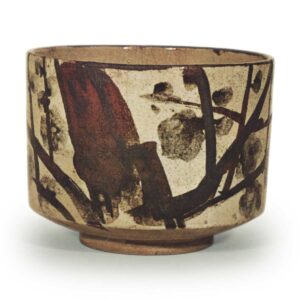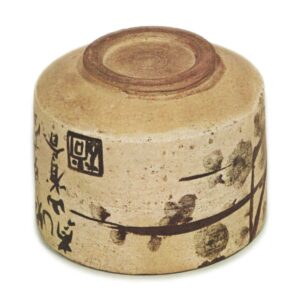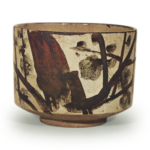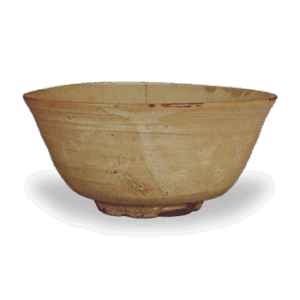

Height: 7.9cm
Diameter: 10.1-10.3cm
Height of foot ring: 5.6cm
Height of foot ring: 0.5cm
Ogata Kenzan was famous for his paintings and calligraphy, but he devoted his life to pottery, calling it his “pottery business”. Kenzan also inherited the blood of his grandfather, Sōhaku, and his father, Sōken. He was a diligent student from a young age, and he also had a deep knowledge of Japanese, Chinese and Korean culture, and his interests were also of a high order. As he was descended from Hon’ami Koetsu, he was particularly devoted to Koetsu’s art, and it is said that Kenzan’s ideal of art was to be found here. After a while, he learned the art of pottery from Ninshō, and in 1699, at the age of 37, he opened his own pottery in Narutaki-sengoku, having already reached middle age. After that, he moved to the Nijo Chojiya-cho area, and in his later years he moved to Edo, where he died at the age of 81. Even in his old age, his energy was still strong, and he continued to make pottery and paintings until the year of his death, and in fact his work became even more fresh and lively.
Kenzan’s pottery is not dull in any period, but in particular, in the early Narutaki period, we can see many works that vividly express his artistic inspiration, with his youthful vigor and enthusiasm. Judging from the style and the inscription on this tea bowl, it is thought that it was made during the Narutaki period, when Kenzan’s style was at its peak, but the calligraphy is of such a high standard that it seems as if Kenzan himself is looking on with a smile of satisfaction.
The base is the same black clay used by Nonomura Ninsei, and it is a half-tube with a neat shape. The plums in the freely drawn cast-metal design are similar to Korin’s style, but they are more abundant and elegant, and in terms of artistic taste, they are superior to other plums by Kenzan. In addition, the inscription
The work of nature
Autumn rabbit’s hair
Kenzan’s sketch
(“Shoko” seal)
The calligraphy is one of the best pieces of Kenzan’s work, and it has a deep, elegant flavor and a wonderful sense of tea. Not only is it a favorite of Kenzan’s, but the spirit of the painting and calligraphy are perfectly matched, and the overflowing sentiment is particularly exquisite, creating a work of art that is full of the spirit of tea. The character “省” is an abbreviation of the name “Kenzan” (meaning “deep contemplation”), and “尚古” is Kenzan’s pseudonym, Shoko-sai. Although Shoko-sai was originally the name of his studio in Narutaki-sengoku, it has since been used at other locations, but in this case it can be taken as a sign of Narutaki-sengoku. The rim is decorated with a red edge, and a lovely hood stands elegantly on the refined foot ring.
Accessories:
Inner box: paulownia wood, plain
Same as above: “Plum Blossom Painting Tea Bowl, Shisuiro (Kenzan seal)” written on the lid
Outer box: cedar wood, plain
Same as above: “Kenzan Tea Bowl, Plum Blossom Painting” written on the lid
Unknown provenance.








